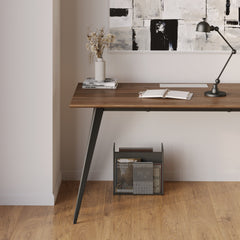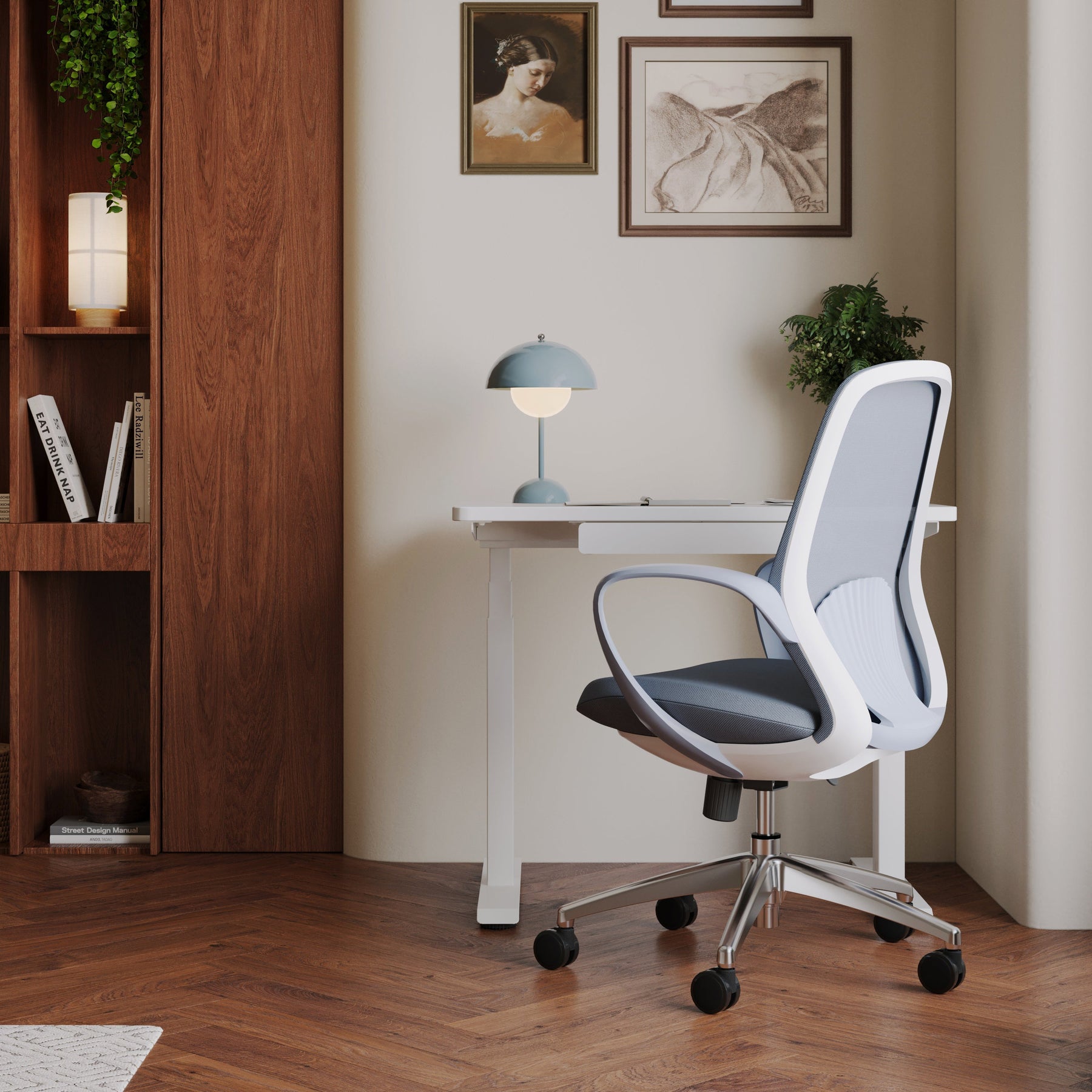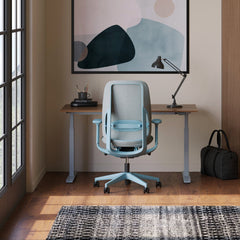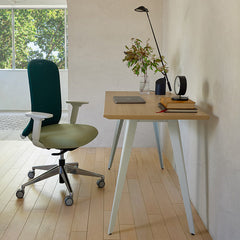Get 10% off your first order
Find the office furniture that’s designed to match your style, comfort, and needs perfectly. Subscribe
Spaces That Shift With You: Building a Workspace That Adapts to Every Task

Visit quiz page to see how we makes it easy to create an inspiring workplace

Modern schedules rarely move in straight lines. Creative work, deep focus, quick syncs, household responsibilities, and recovery breaks often overlap within the same day. A workstation that keeps pace with those demands is not a single piece of furniture, it is a living system that responds to posture, energy, and task changes. The right setup supports healthy movement, reduces friction, and helps you flow between roles without starting from zero each time.
Rigid nine-to-five patterns have given way to mixed-location routines. Many professionals now switch between video calls, solo problem solving, and short bursts of administrative work, sometimes in the same hour. A static desk-and-chair arrangement can feel like a bottleneck when tasks shift quickly. A flexible environment makes transitions smooth, which preserves cognitive momentum.
Fixed postures contribute to muscular fatigue, reduced circulation, and distractions caused by discomfort. Over time this leads to lower quality output and unnecessary breaks. Evidence-based guidelines emphasize neutral alignment and frequent posture variation to maintain musculoskeletal health. For foundational reference on safe posture and task fit, consult the NIOSH ergonomic posture recommendations.
An effective, schedule-responsive workstation is built on three pillars. Mobility enables quick micro-shifts in position. Modularity allows elements to reconfigure for a new task without clutter. Mindful ergonomics ensures every adjustment protects the spine, shoulders, hips, wrists, and eyes. When these pillars work together, the workstation becomes an ally rather than a constraint.

Chairs that pivot, casters that roll smoothly, and surfaces that accommodate quick angle changes encourage you to move as you work. Movement is not a distraction when it is small and purposeful. Micro-movements reduce stiffness and keep attention steady during long cognitive efforts.
Keep common tools within a small reach radius, then place secondary tools slightly farther away to promote brief, healthy movement.
Use a foot position cue such as a small balance bar to vary ankle and knee angles during seated work.
Set reminders to perform gentle posture resets rather than long workouts that are hard to maintain during busy periods.
Modularity can be as simple as a side table that slides under your main surface or as refined as a secondary seat for reading or calls. The goal is repeatable reconfiguration that takes seconds, not minutes. Each module should have a clear role so your brain knows what mode it is entering as soon as you shift.
A slim rolling pedestal for peripherals and notepads.
A compact secondary surface for sketching or writing by hand.
A lightweight side chair for phone calls or quick reviews away from the primary screen.
Ergonomics is the foundation that keeps the rest of the system sustainable. Prioritize a chair that supports neutral lumbar alignment and allows the seat, back, and arms to adjust in small increments. Consider ergonomic seating that adapts to multiple tasks when your day alternates between typing, reading, and meeting facilitation. Pair the chair with a monitor setup that places the top third of the screen near eye level while keeping wrists neutral on the input devices.
Seating that supports controlled movement helps disperse pressure and maintain alertness. When the backrest lets you recline slightly for reading, then return to upright with light resistance for typing, you maintain flow across tasks without forcing a full reset. The goal is responsiveness to your micro-adjustments, not dramatic swings.
Beauty and function can reinforce each other when design details serve the body. Breathable textiles, refined edges that do not dig into thighs or elbows, and a backrest contour that supports the natural S-curve of the spine create comfort that endures. For an elegant option that moves easily between work and personal spaces, explore hybrid-ready support in the Muse design.
For long sessions where precision matters, a chair with a stable base and calibrated lumbar engagement can reduce the urge to hunch. The Onyx ergonomic model for modern posture balance aligns stacked joints and distributes load across the back, hips, and legs, which helps you maintain form without constant adjustments.
Even an excellent chair encourages certain patterns over time. Consider rotating among pieces from a curated chair collection for multi-zone work. Use one profile for focused typing, another for reading, and a third for quick calls. This rotation interrupts repetitive stress and keeps your body learning small variations that protect comfort.
Desk placement shapes attention. Facing a wall reduces visual noise, while a side orientation to a window captures daylight without glare. Keep the primary input zone centered and clear. Place frequently used analog tools on the dominant-hand side and create a small staging area for items that rotate in based on the current task.
Alternating between seated and standing work can reduce fatigue and improve breathing mechanics. An adjustable desks suited for long sessions approach offers height changes that are quick and quiet, which encourages use. The shift can be small, for example a few centimeters up to refresh angles, or a full transition to standing during calls.
Cable routes that follow the desk edges and drop through grommets reduce visual clutter. Mount power strips under the surface and give each device a clear path. A monitor arm frees desk depth for writing and sketching. For a streamlined single-surface setup, consider an office desk built for seamless transitions that pairs clean geometry with dependable stability.
Walls and vertical frames can carry much of the load in small spaces. Floating shelves hold reference books and bins, while pegboards keep adapters and small tools visible and easy to grab. Vertical planning reduces the tendency to stack items on the main surface, which helps protect posture by keeping your elbows close and your spine neutral.
Apartments and shared rooms often require furniture to fill more than one role. Choose pieces that tuck under the desk when not in use or shift beside seating for a quick meeting nook. A mobile side surface can become a standing perch for short thinking sessions.
Contoured shells and compact frames deliver comfort without consuming floor area. For a smaller profile that still supports posture shifts, look at space-savvy comfort with the Seashell profile. Combine it with a thin cushion or lumbar roll to tune support for different users.
Strategic mirrors, simple lamp geometry, and a light color palette create visual expansion in small rooms. Keep decor minimal and purposeful, then let textures like wood grain or woven fabric carry the warmth. The result is a sense of openness that helps your mind breathe during complex work.
Balance natural and artificial light so your eyes do not fight glare or strain. Place task lamps on the opposite side of your dominant hand to prevent shadows across the work surface. Adjust color temperature across the day, cooler for alert focus and warmer for wind-down sessions.
Calls benefit from gentle absorption that reduces echo. Focus blocks often need a slightly quieter background than collaborative sessions. Layer soft materials, such as a rug under the chair path and a felt panel near reflective surfaces, to fine-tune the room without over-dampening.
Breathable fabrics, smooth-edged surfaces, and stable textures reduce sensory friction. If your skin reacts to synthetic materials during long sessions, choose coverings that balance airflow with support. The tactile experience of your desk edge and armrest makes more difference than most people expect.
Begin with a quick alignment check for feet, hips, spine, and head.
Set a small timer that reminds you to change angle or stand briefly.
Clear two nonessential items from the desk before your first deep focus block.
Rotate chair positioning or swap in a different profile for your longest task.
Reroute any cable that introduces tug or visual noise.
Update a small tool caddy so only the week’s active tools remain on the surface.
Reposition the desk relative to sunlight to avoid glare during seasonal shifts.
Swap a cushion or lumbar roll weight to match temperature and clothing layers.
Review storage to remove items that no longer serve your current projects.

Selecting sturdy frames, reliable adjustment mechanisms, and repairable components reduces replacement cycles. Hardware that tolerates frequent micro-changes will serve you longer than brittle or single-position parts. This approach keeps your setup aligned with changing schedules without adding waste.
Solid wood, metal structures, and high-quality textiles handle repeated adjustments with fewer squeaks or shifts. When possible, choose finishes that resist scratches and make dust easy to remove. A clean, well-maintained surface encourages better posture and less fidgeting.
Morning: standing sketch session with pen display, side table pulled forward.
Midday: seated editing with lumbar support engaged, monitor centered, tablet stowed.
Afternoon: quick sync in a secondary chair to change posture, then final export in standing mode for renewed energy.
Morning: half-closed visual field by facing a wall to reduce stimulus.
Midday: pivot to a second seat for calls and note-taking.
Late day: return to primary chair with seat pan angle slightly open to promote circulation during long data reviews.
Morning: standing outline and voice notes with the camera on a stable arm.
Midday: switch to softer seating for reading and feedback.
Evening: seated recording with controlled lighting and a quieter acoustic profile.
| Workstation Type | Adaptability Level | Ergonomic Support | Ideal Context | Notes on Evolution |
|---|---|---|---|---|
| Static Desk Setup | Low | Basic | Short tasks and minimal gear | Best when paired with a secondary perch or reading chair |
| Adjustable Furniture | Medium | Strong | Mixed seated and standing work | Benefits from consistent micro-height changes |
| Modular Configuration | High | Moderate | Spaces with varied tasks and users | Requires clear storage rules to avoid clutter |
| Hybrid Adaptive System | Very High | Comprehensive | Full-day work with frequent mode shifts | Most effective with a seating rotation plan |
| Primary Task Emphasis | Desired Chair Traits | Helpful Adjustments |
|---|---|---|
| Typing and documentation | Stable base, responsive lumbar, grounded armrests | Small seat pan tilt, arm height matched to keyboard profile |
| Reading and reviewing | Light recline with neck support, breathable back | Backrest tension softened, foot placement cue for circulation |
| Calls and facilitation | Easy swivel and pivot, compact footprint | Seat height slightly elevated to open hip angle |
List the two or three tasks you perform daily for the longest duration. Note any comfort issues, glare patterns, and cable tangles. Identify your smallest workable footprint so modular pieces fit smoothly.
Center the monitor and align its height so you keep a neutral neck. Place input devices to allow straight wrists and relaxed shoulders. Choose seating that responds to micro-movements. If your current chair cannot do this, prioritize a change there before adding decor.
Introduce a rolling pedestal or side table that slides under the main surface. Assign a specific role to each module, such as writing or sketching, so switching positions feels purposeful rather than random.
Install a narrow shelf or pegboard system above or beside the desk. Move infrequently used items off the surface. Keep analog tools you love within arm’s reach so they remain in your rotation.
Set up a task lamp that angles away from your dominant hand. Add a soft absorber near reflective surfaces to minimize echo. Choose a handful of textures that feel calm to the touch, then let color accents remain simple.
Use a daily posture reset, a weekly cable and tool review, and a seasonal light orientation check. These routines keep your workstation aligned with the realities of your current schedule, not the schedule you had last year.
Most professionals see the fastest comfort gains from a chair that invites movement without collapsing support. Switch to seating that enables small, frequent angle changes while keeping the lumbar zone engaged.
Reorient the desk to control light and minimize glare, then simplify the sightline from your chair to reduce visual noise. This often produces an immediate sense of calm and control.
Adopt a two-tier rule. Keep only active tools on the desktop, then assign a dedicated shelf or caddy for items that support the week’s projects. The separation preserves focus during transitions.
Track the comfort of your lower back, neck, and wrists over a week, and note when and where discomfort appears. Simple observations guide you to meaningful changes.
When you add a new item, define the job it will do and the friction it will remove. Make one change at a time so you can feel its contribution. Systems evolve best when each part earns its place.
Primary chair aligned to monitor center for document production.
Secondary chair two steps away for calls and voice notes.
Side table on casters for sketching, stored under the desk after use.
Desk parallel to window for controlled daylight.
Mobile pedestal holds cameras or tablets, docked under the surface.
Wall grid keeps cables, adapters, and mics visible and tidy.
Stable desk and adjustable chair as the core.
Pegboard with labeled bins for each user’s tools.
Foldable perch that appears for short tasks, then stows flat.
Seated neutral for typing, 20 to 30 minutes.
Light recline for reading, 5 minutes.
Standing or perching for calls, 10 minutes.
Gentle stretch before returning to seated neutral.
Shift weight from one foot to the other while standing.
Reposition the mouse and keyboard slightly to invite wrist variety.
Nudge the monitor angle to follow your eye line rather than forcing your neck to adapt.
Keep one excellent pen, a single reliable notebook, and a small tray that holds only the current project. The clarity of purpose reduces decision fatigue while supporting a tidy workstation that adapts in seconds.
Let one textural element carry warmth, such as wood grain or felt, then keep the rest neutral. The space gains character without crowding your attention, which makes it easier to maintain form.
If your desk becomes crowded every time you sketch or take handwritten notes, add a narrow side surface that slides into place only when needed. If calls always lead to slouching, bring in a compact secondary chair to reset posture.
If you are constantly hunting for the same adapter or tool, consolidate into a single vertical organizer. If decor competes with function, remove one decorative element for every functional element you add.
Healthy posture, regular movement, and clear surfaces have served professionals for generations. Technologies will change, but the human body benefits from small adjustments, even load distribution, and environments that support attention rather than demand it.
When your setup is built on mobility, modularity, and mindful ergonomics, it can adjust to new tools, different rooms, and shifting schedules without wholesale replacement. The system improves as your work evolves, which is the most practical form of future readiness.
1. Raise or lower the seat to keep hips slightly above knees during typing.
2. Nudge the backrest tension so recline feels supportive rather than floppy.
3. Place the keyboard so elbows hover near the torso, not flared outward.
4. Tilt the display slightly back to follow your natural eye line.
5. Route cables along edges and down a single leg to remove visual clutter.
6. Rotate among two or three chairs across the week to avoid repetition injury.
7. Recheck light direction after seasonal shifts to prevent glare and squinting.
A workstation that evolves with your schedule does not rely on radical changes or speculative features. It depends on small adjustments that compound into reliable comfort, clearer attention, and consistent output. Build the core with ergonomics, layer in mobility and modularity, and let daily rituals keep the whole system aligned with the way you actually work.

Spaces That Shift With You: Building a Workspace That Adapts to Every Task

Room to Think: Designing an Efficient Workspace Without Overcrowding

Built to Support You: Why Ergonomic Tables Redefine Remote Work
Get 10% off your first order
Find the office furniture that’s designed to match your style, comfort, and needs perfectly. Subscribe
Leave a comment